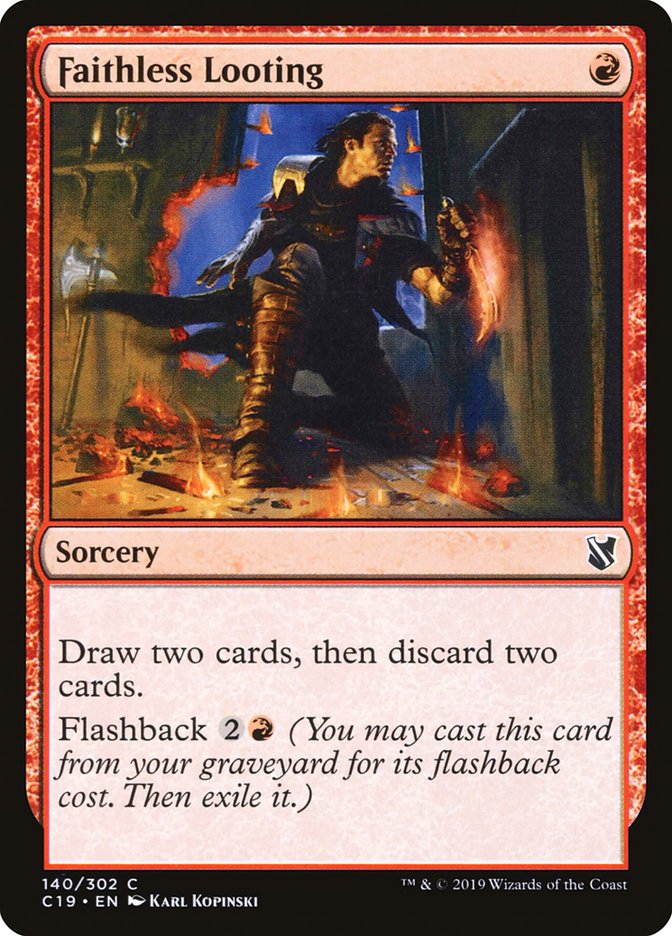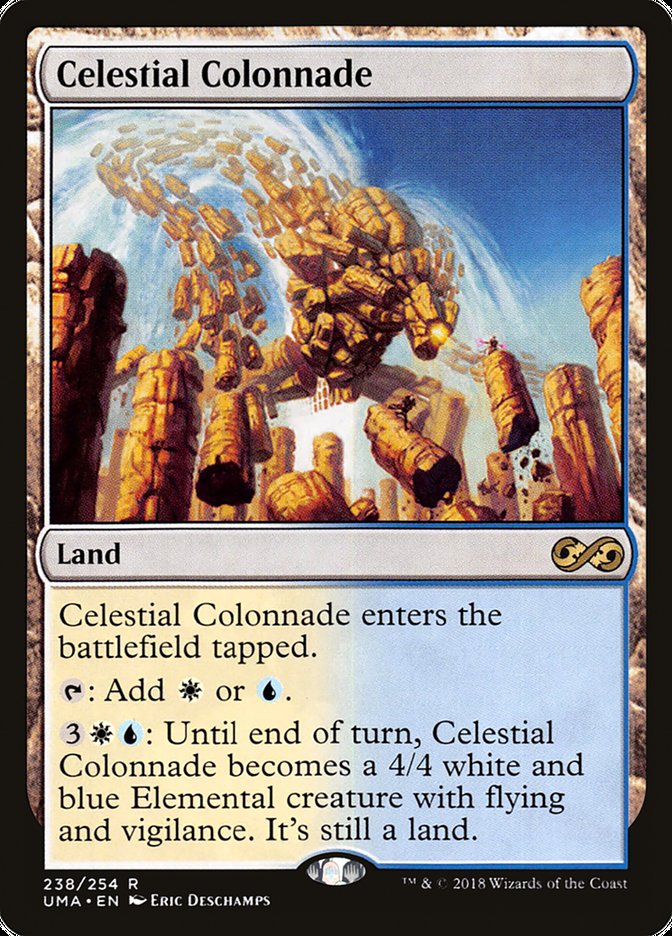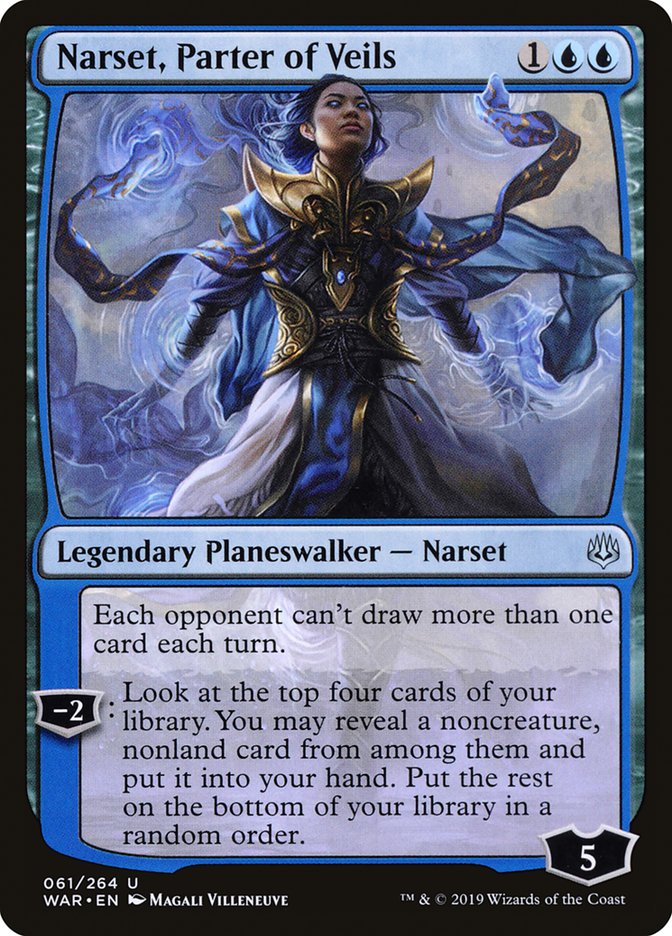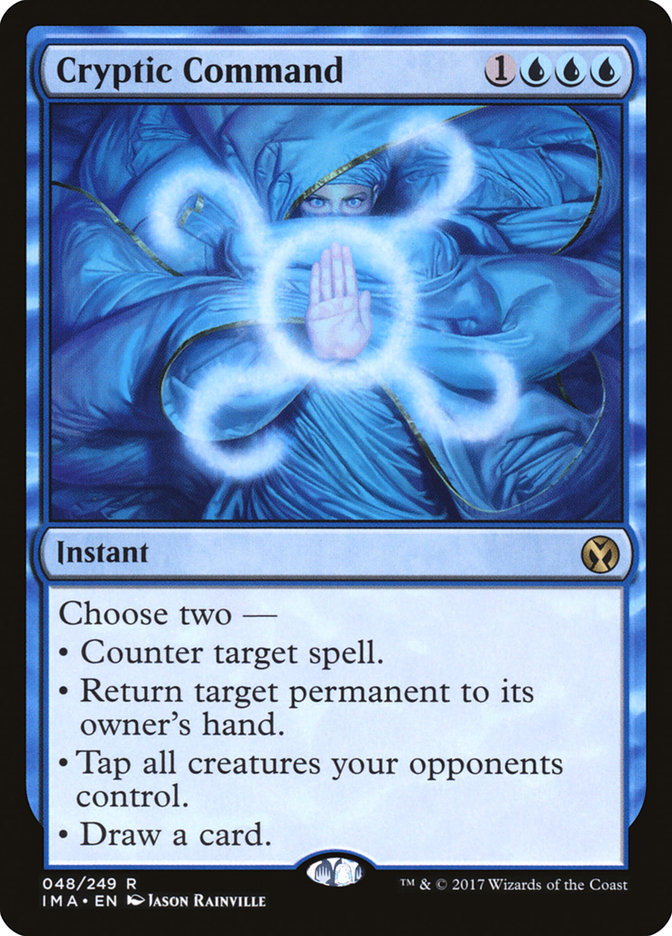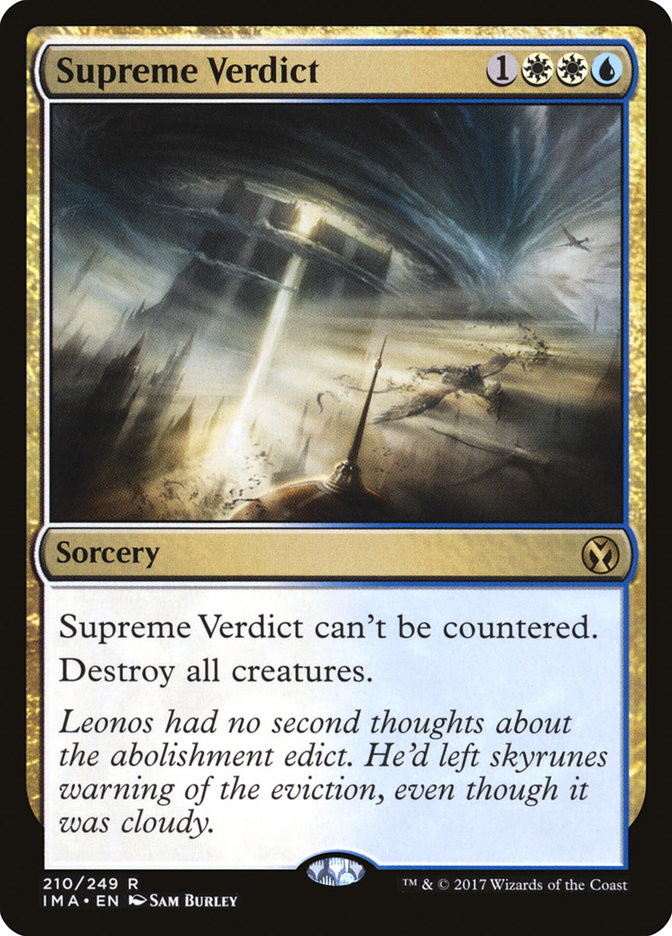This was the second-most-satisfying Banned and Restricted announcement that I’ve had the pleasure of experiencing.
For those who have followed me for some time, you probably remember my crusade to free Jace, the Mind Sculptor from a prison it never deserved to be in. The argument I presented was simple. Modern has been a high-powered format since its inception, which is in part due to the increased power level of sets in the last decade.
Wizards is not holding back and continues to print cards that push the boundaries of gameplay. These hit us in Standard, as well as sets that are only legal in Modern. Modern Horizons and War of the Spark showed us what a few cards can do to a format that has a deep pool. A few planeswalkers came from a Standard set and completely took over each control variant in Modern. There are too many specific cards in Modern Horizons to adequately describe its impact on the format and it has had a tremendous impact. With haymakers landing left and right, the Banned List in Modern looked antiquated at best.
The original list was drafted out of fear. These cards dominated their Standard and Extended formats, making them dangerous to add to a new format that Wizards wanted to push. I completely understand that and never questioned the list in the first couple of years. Once I came to the realization that the format houses busted strategies that stifle gameplay, something had to change.
I got on the soapbox, week after week, and month after month, calling for Jace, the Mind Sculptor to have its chance to enhance blue decks that were embarrassingly bad. I sniped a lucky 13-2 at a Modern Grand Prix in 2013, but outside of that there was no success with control worldwide. Fans of Celestial Colonnade continued to get walloped until the return of our great hero.
After extensive lobbying with a touch of pleading, Jace, the Mind Sculptor was unbanned. The announcement shook the Magic world and that was easily the best Banned and Restricted Monday I have ever experienced. Regardless of my personal role in the planeswalker’s freedom, I am positive that Wizards takes into consideration competitive players’ concerns and feedback. We live in the trenches weekly, play endless hours of Magic Online, battle on the SCG Tour, or take our fight to the professional circuit. They examine the data from these events, but they also read our content. Before the announcement a few days ago, one of my pals in Seattle read my article and could only shake his head on the accuracy.
— Aaron Forsythe (@mtgaaron) August 26, 2019
The second-best Banned and Restricted announcement just occurred. I have written article after article, trying to give a voice to those of us who have a deep understanding of competitive Magic. Modern was missing something, and Jace, the Mind Sculptor wasn’t enough to shake the format up enough. It modestly improved control and has remained in that role since. Control needed more and it finally got what it needed.
I called for the banning of Faithless Looting and Hogaak, Arisen Necropolis, as well as the unbanning of Stoneforge Mystic. Faithless Looting had to go for a multitude of reasons, all of which I explained in detail in last week’s article. This isn’t the only article that I have written on this subject, but it is the most recent. Play design has had this thorn in its side for far too long, paying the price whenever they dared to craft a graveyard spell. The funniest example was the unbanning of Golgari Grave-Troll and then its immediate re-ban. That is never a good feeling for those making the decision and should have been the beginning of the end.
With each new graveyard spell, decks that summoned creatures in the early-game became obsolete. Crippling Chill, Prized Amalgam, Carrion Feeder, and Hogaak, Arisen Necropolis are just a few examples of spells that pushed decks that were competitive into oblivion. I have a control bias; however, I am always an advocate for format health. When Bridgevine was destroying the world, I called for the banning of Faithless Looting and Hogaak, Arisen Necropolis, even though the matchup was fantastic for control. I was wiping the floor with the remaining few decks left in the metagame, but that did not matter. The format sucked and changes had to be made. Now that we are in the clear from fourteen power on Turn 2 from the graveyard, the midrange and aggro decks that were forgotten can rise.
The banning solved the biggest issues of the format, but control fans received a much more exciting gift. Stoneforge Mystic, my second crusade, was freed from the same “too good in Standard” prison as its planeswalker best friend. There is a bit of salt out there for this decision, hearing the same arguments made for Jace, the Mind Sculptor. Stoneforge Mystic will not destroy Modern, just like Jace, the Mind Sculptor did not destroy Modern. It plays a role that many decks have missed over the years, and now those decks will rise from obscurity.
There are quite a few white-based midrange decks that people love to play. Abzan, Eldrazi, Death and Taxes, and Humans all gain a ton of power to take on the new Modern. Each one will be more competitive and challenge decks that have dominated their slot for far too long. Humans is the one exception, as it has had great success without Stoneforge Mystic, but it will get an even bigger boost now. Even combo decks get a piece of the pie, using Stoneforge Mystic to fetch a Sword of the Meek for the Four-Color Urza fans out there. These decks, along with anything using an Aether Vial, will welcome the boost with open arms.
The biggest winner in this announcement is Team Control. The graveyard decks were never easy to tango with and the lack of a powerful early-game threat has caused control to remain a Tier 1.5 deck in the recent era. The gradual increase has been heartwarming, from a Tier 3 pile before Jace, the Mind Sculptor to Tier 2 with it and then Tier 1.5 with War of the Spark planeswalkers, and now Tier 1 with Stoneforge Mystic. When Jace, the Mind Sculptor was unbanned, I mentioned multiple times that this wasn’t enough of a push toward legitimacy and Stoneforge Mystic was the missing piece. We are now at the top of the metagame and most foes will fear this matchup.
Creatures (9)
Planeswalkers (5)
Lands (24)
Spells (22)

I wrote that I would play Four-Color Urza with Stoneforge Mystic this weekend because I haven’t had the opportunity to test enough with a brand-new control build. After getting some games in, I am now torn on which option to go with. It has been extremely hard to optimize a list as quickly as I would normally be able to do because of the sacrifice that had to be made to fit six pieces of the Stoneforge Mystic package in an already tight deck.
Azorius Control has become one of the best decks out there on the back of planeswalkers, most of which had to get cut to make this transition. One Teferi, Hero of Dominaria had to exit the premises, as well as the entire Narset, Parter of Veils army. That was the most painful set of cuts I had to carry out; however, it was also the most obvious.
Narset, Part of Veils doesn’t mesh well with the new builds of Stoneblade out there. Not only have four additional creatures been added to water down the card draw of Narset, Part of Veils, but the curve doesn’t work at all. Tapping out on Turn 3 can be necessary to deal with a threat that must be answered. This will happen with Stoneforge Mystic just sitting around from the turn prior, with no mana to use its key ability.
Teferi, Time Raveler is an expert at putting the enemy back a turn while helping hit land drops and drawing enemy fire. Detention Sphere or a Snapcaster Mage may be required to deal with a powerful creature that Stoneforge Mystic can’t handle on its own. Unfortunately, Narset, Parter of Veils will rarely be a correct play with Stoneforge Mystic as the previous play. Landing it and drawing a noncreature spell, leaving a three-loyalty planeswalker and a sitting duck 1/2, isn’t a good series to deploy or build a deck around.
After competing without Narset, Parter of Veils, I can honestly say I do not miss it as much as I thought I would. Teferi, Hero of Dominaria hits much harder and I will be looking for ways to get a second one back in the fold. It plays the same role as Gideon Jura did of old, allowing you to apply pressure with your creatures and Equipment while having a looming threat that can answer any creature. These were just four of the six cuts, so a few spells had to go as well.
Cryptic Command and Supreme Verdict were dropped in number to make this legendary control rebirth occur. I have seen some out there that are going with no mass removal, which is wrong. Once people agree not to play Humans ever again, then we can bank on our flimsy Batterskull and a few Path to Exiles to protect the fort. At this point in Modern, Humans is great and people will play it, which means we need to protect ourselves. Wrath of God and Supreme Verdict are in the maindeck and shall remain there for the foreseeable future. I have a third battlefield sweeper in the sideboard, but it is possible that it returns to the main once the unbanning hype dies down a little.
There are plenty of midrange and aggro decks that may hang back for us to destroy the Mono-Green Tron wave first. Control has and will continue to mush Mono-Green Tron if we play counterspells and Field of Ruin. I have read some vicious rumors that Urza’s Tower is favored against us, which is laughable. Azorius Control may have only had one good matchup for the last few months, and it was exactly Mono-Green Tron. As the big mana fervor fades, we may need to include more battlefield sweepers.
Choosing the correct Sword to use was a lot easier than I thought it would be. For years, I thought Sword of Fire and Ice could be the Equipment that Stoneforge Mystic always wanted to find for its Azorius controller. It turns out that the Legacy format already slammed the door shut on that issue many years ago. Sword of Feast and Famine is light-years ahead of Sword of Fire and Ice as the stock weapon in the maindeck. Untapping all your land as a control player is still absurdly good, not to mention strategically waiting to get vital cards out of an opponent’s hand.
Untapping all your land in Modern turns out to be much better than it was in Legacy. In Legacy, you have far fewer mana sources compared to Modern. These games go long now, allowing you to easily invest five mana, just to get it all back to slam a planeswalker in the second main phase. This comes up more often and is wonderful every time.
The rest of the deck should match what you all have seen from me and my years of studies at the Hallowed Fountain. The only big differences that have taken place are in the sideboard, which has been revamped for the new world we now live in. We still see Stony Silence and Rest in Peace, even though they hurt us a bit. The damage that these hate enchantments do to an opponent make them worth it still, especially with Four-Color Urza as one of the best decks in the format. There will be many applications for these two, so keep them around. I added further flash components to the sideboard as well, making the post-sideboard gameplan shift away from a clean Stoneforge Mystic. Opponents will sideboard to deal with Batterskull but get stunned as the proactive approach is replaced by a reactive one.
This is just the first iteration of many, but control is now, officially, the real deal.



